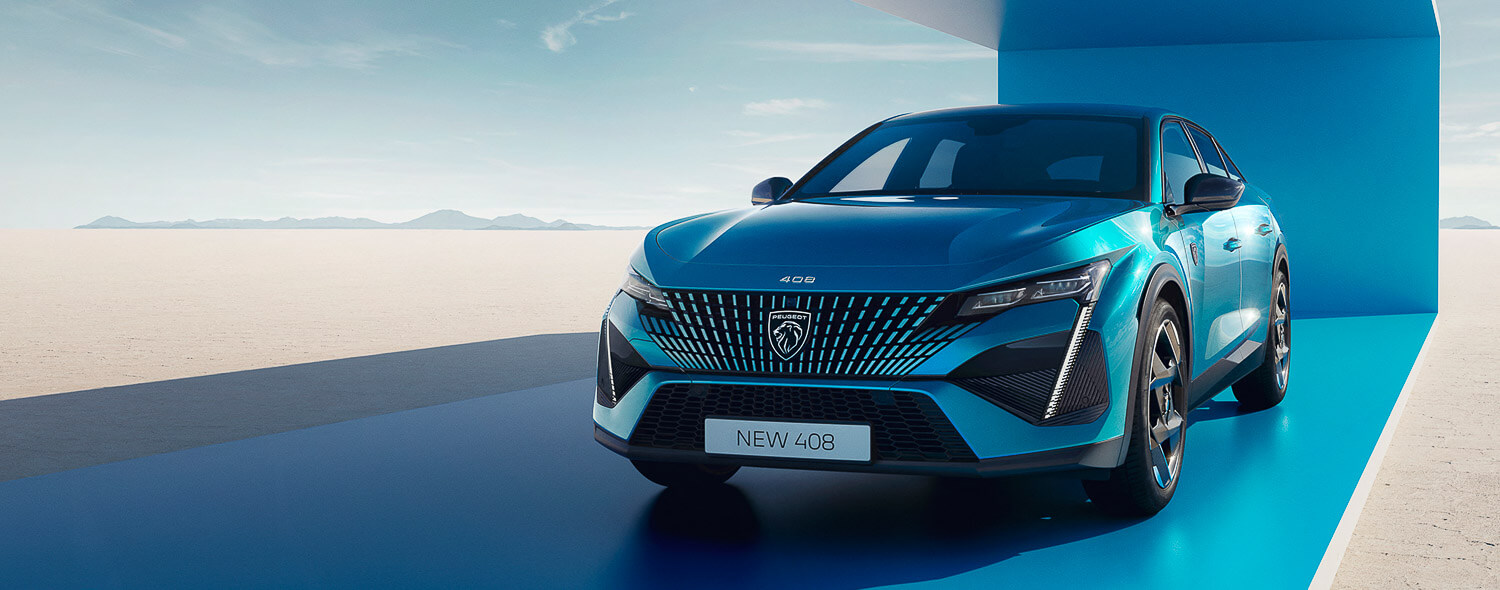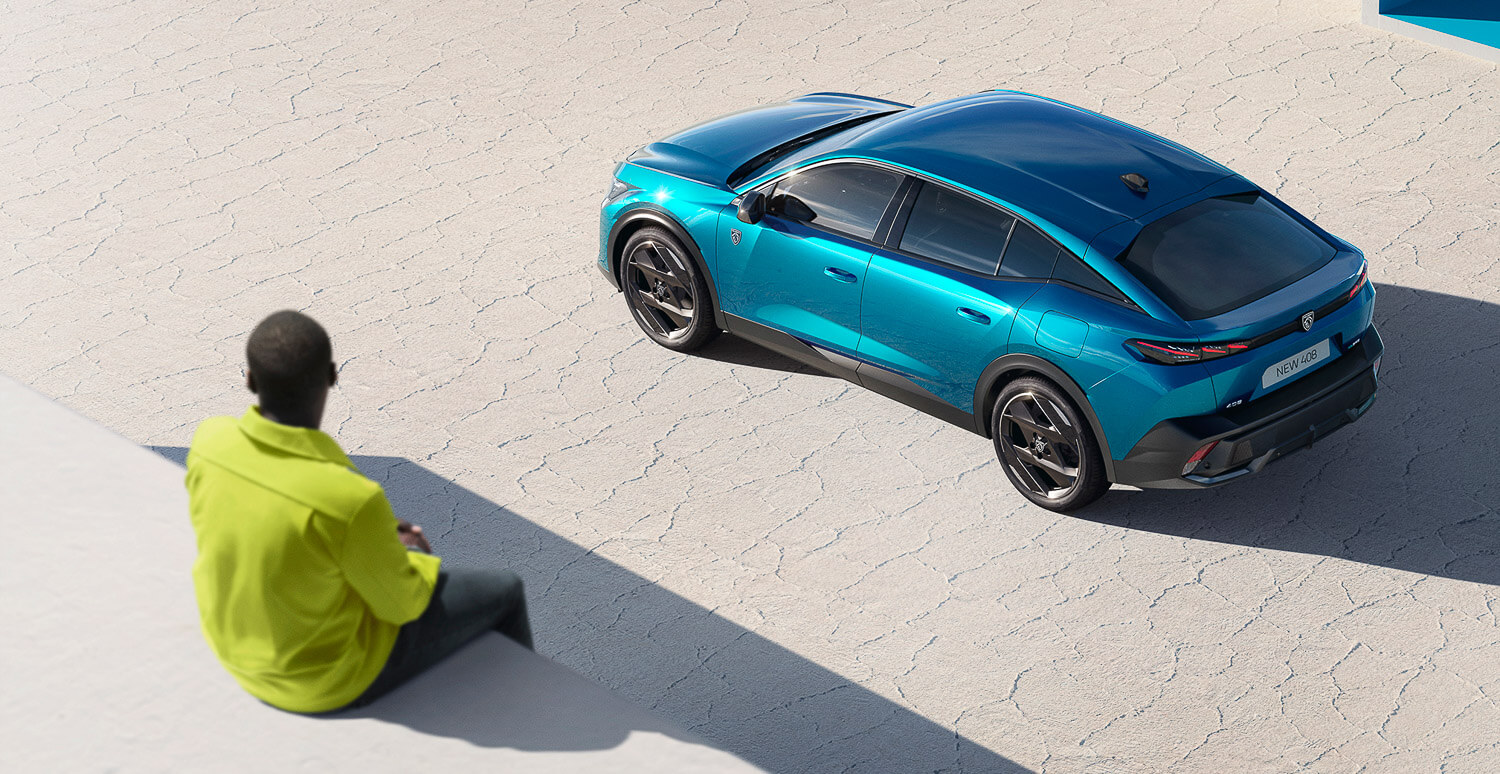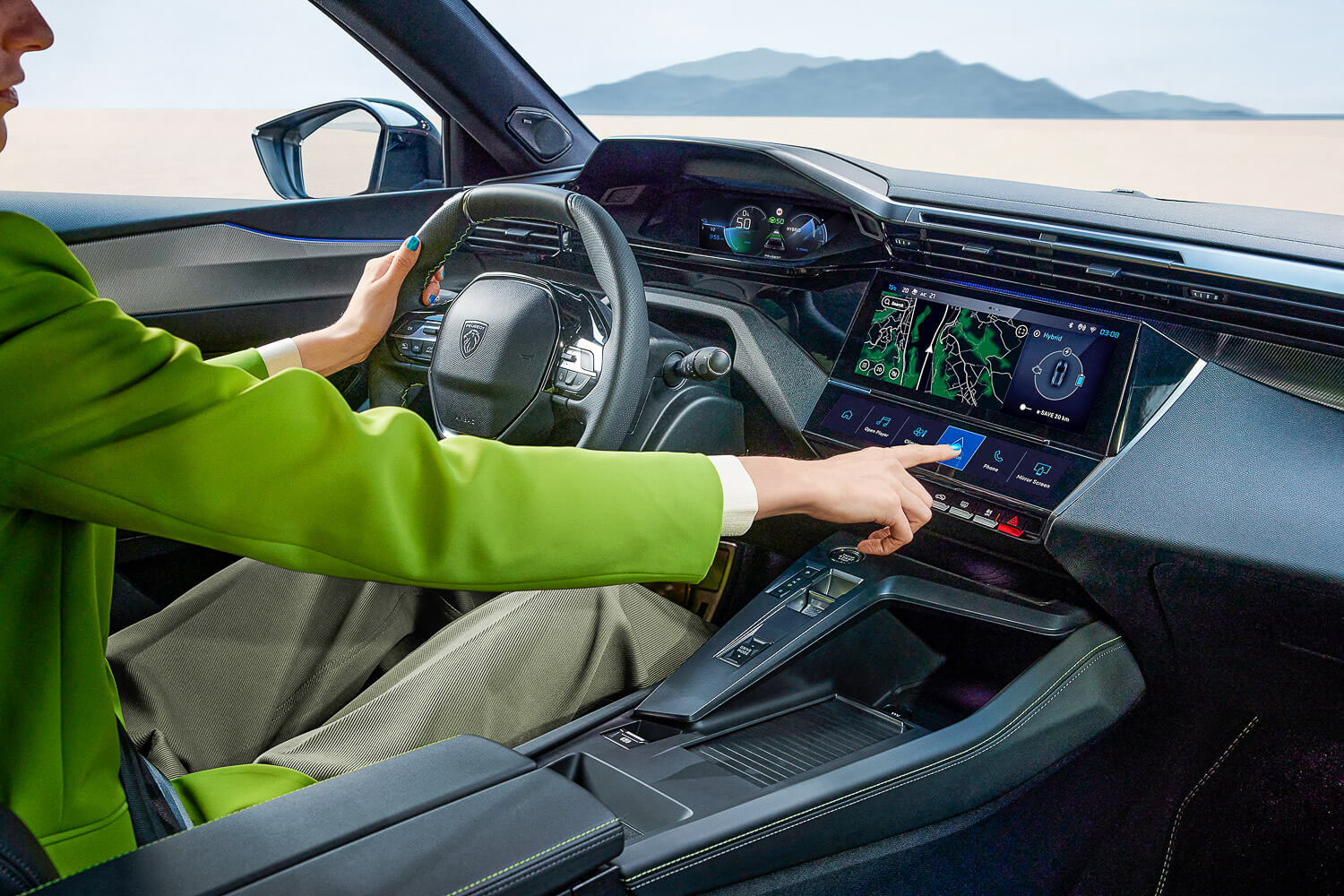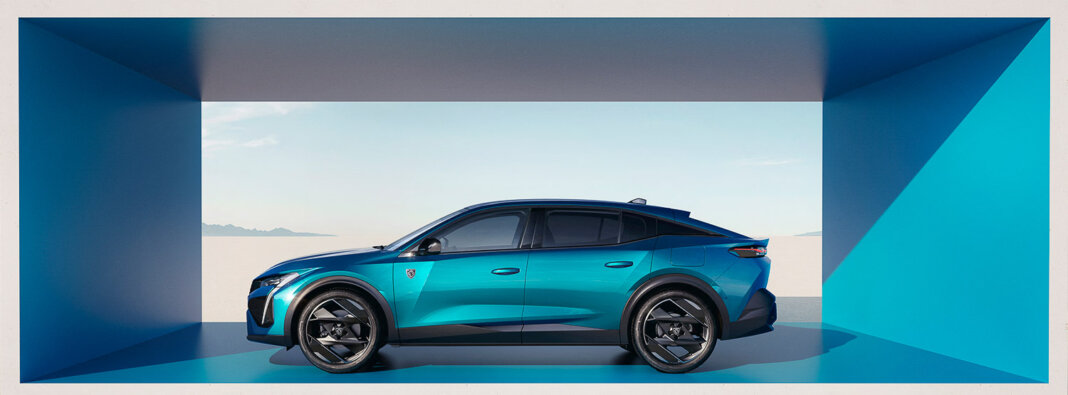At DriveLife, we love the current designs of all Peugeots. Sharp and crisp lines, and a cohesiveness that’s a lesson to others. The only thing that’s been missing from Peugeot’s line-up has been some sort of electrified option that’s beyond the small but excellent 208 EV.
For 2022, Peugeot is releasing an updated 408 in a fastback design, and with two of the models as plug-in hybrid vehicles (PHEV). The range of engines powering the Peugeot 408 includes two rechargeable hybrid versions with 180 and 225bhp, and a 130bhp petrol version. All three are paired with an 8-speed EAT8 automatic gearbox. An all-electric version will follow a few months later.
Peugeot New Zealand says that efficiency was a key concern for the designers of the Peugeot 408, since the combination of efforts in terms of aerodynamics, weight reduction (from 1,396kg) and low-emission engines means that the vehicle can now boast remarkably low average energy consumptions (under homologation), both for the hybrids as well as for the 130bhp petrol version.
The new Peugeot 408 will arrive on the market at the very beginning of 2023. A car with a global ambition, it will be produced at first in Mulhouse, France, for the European market and then, soon afterwards, in the Chengdu factory in China for the local market.

“At Peugeot, we believe that life is better with allure. With its unique look, innovative fastback silhouette and unbridled elegance, the new 408 is the perfect expression of the Peugeot Brand’s philosophy and inventiveness,” says Linda Jackson, CEO of the Peugeot brand. “Unexpected from every angle, the new Peugeot 408 has been designed for lovers of cars and of life, who want to break free from the traditional while seeking responsible pleasure. It embodies Peugeot’s exacting technological standards – controlled efficiency and a very high-level digital experience – as well as the intense emotions of instinctive driving pleasure”.
The 408 features a specific exterior architecture. Based on the multi-energy EMP2 (Efficient Modular Platform) version, it has a long wheelbase of 2.787m, with an overall length of 4.69m and a width of 1.859m with the mirrors folded in.
The tracks are wide, with 1.599m at the front and 1.604m at the rear, with large diameter wheels (720mm) and rim sizes of up to 20 inches. Although raised, the Peugeot 408 nevertheless has a slim and sporty profile, thanks to a height of just 1.48 m.
At the front, there is a long bonnet set between raised wings, which is characteristic of the latest Peugeot models. This styling choice reinforces the look at the front end while streamlining the profile, since the wing/hood cut-out is invisible. This construction principle also simplifies the outer line of the bonnet to allow the body parts to fit perfectly, says Peugeot.
The Matrix LED technology used for the lighting has made it possible to design ultra-slim headlights. These headlamps are the look of the new 408: a resolutely Peugeot look. The light signature extends downwards with two strips of LEDs in the shape of fangs that plunge into the bumper.
The rear of the roof is a particularly aerodynamically sensitive area. The air flow is optimised and guided by two “cat ears” which create an optimal aerodynamic corridor towards the boot lid spoiler. These two features, which are as angular as they are efficient, are distinctive elements of the new Peugeot 408’s style.

2023 Peugeot 408: Colour Options
The new PEUGEOT 408 will come in 6 colours:
- Obsession Blue (new colour, selected to mark the launch of the model)
- Titanium Grey (new colour)
- Artense Grey (Allure trim only)
- Elixir Red
- Pearl White
- Black Perla Nera.
2023 Peugeot 408: Powertrain
Two plug-in hybrid engines are available on the new PEUGEOT 408:
- PLUG-IN HYBRID 225 e-EAT8: 2-wheel drive / combination of a 180 bhp (132 kW) PureTech engine and an 81 kW electric motor coupled with the e-EAT8 8-speed automatic gearbox / currently undergoing homologation.
- PLUG-IN HYBRID 180 e-EAT8: 2-wheel drive / combination of a 150 bhp PureTech engine (110kW) and an 81kW electric motor coupled with the 8-speed e-EAT8 automatic gearbox / currently undergoing homologation.
The Li-ion battery on both plug-in hybrid versions has a capacity of 12.4kWh and an output of 102 kW. Two types of on-board chargers are available: a 3.7kW single-phase charger as standard and an optional 7.4kW single-phase charger.
Estimated charging times are the following:
- From a 7.4kW Wall Box (32 A) and with the 7.4kW single-phase on-board charger, fully charged in 1 hour 55 minutes.
- From a reinforced socket (16 A) and with the 3.7kW single-phase on-board charger, fully charged in 3 hours 50 minutes.
- From a standard socket (8A) and with the single-phase on-board charger (3.7kW), full charging takes approximately 7.5 hours.
An internal combustion engine is also available: the 130hp 1.2-litre PureTech 3-cylinder petrol engine, which complies with the latest €6.4 emissions regulations, is combined with the 8-speed EAT8 automatic gearbox and a Start & Stop system. This version is currently undergoing homologation.
No diesel version is available and a 100% electric model will be launched going forward.
2023 Peugeot 408: Driving Aids
On board the new Peugeot 408, a comprehensive range of latest-generation driving assistance systems, fed by information gathered by 6 cameras and 9 radars, make driving, manoeuvring and travelling safer and smoother, according to Peugeot. Some of these systems are directly derived from the higher segments:
- Adaptive Cruise Control with Stop and Go function and adjustable inter-vehicle distance setpoint.
- Automatic emergency braking with collision warning: detects pedestrians and cyclists, day and night, from 7 km/h to 140 km/h depending on version.
- Active lane departure warning with lane correction.
- Driver Attention Alert, which detects impaired alertness over long periods of driving and at speeds of over 65 km/h, by analysing the micro-movements of the steering wheel.
- Extended road signs recognition and display on the digital cluster: stop signs, one-way signs, no overtaking signs, end of no overtaking signs, in addition to the usual speed-related signs.
- Night Vision system, which detects living creatures (pedestrians/animals) in front of the vehicle at night or in poor visibility. The range of the system ensures detection, beyond the range of the high beam, with a central infrared vision display in the digital cluster located directly in the driver’s field of vision.
- Long-range blind spot monitoring (75 metres).
- Rear traffic alert: when reversing, alerts the driver to a nearby hazard.
- High-definition reversing camera with integrated cleaning nozzle.
- 360° parking assistance with 4 high-definition cameras (front, rear and side),
- Door mirror angle adjustment when engaging reverse gear.
- Matrix LED headlamps for maximum use of high beam power without dazzling preceding or approaching vehicles.
- Automatic high beam.
The Drive Assist 2.0 package is a further step towards semi-autonomous driving, which will be available later. This package consists of Adaptive Cruise Control with Stop and Go and Lane Keep Assist.
It adds two new functions, which are available on dual carriageways:
- Semi-automatic lane change, which allows the driver to overtake the vehicle in front of him or her and then turn back, from 70 km/h to 180 km/h.
- Anticipated speed recommendation, which suggests that the driver adapt his or her speed (acceleration or deceleration) according to the speed limit signs.
Other equipment is available to facilitate the daily use of the new PEUGEOT 408:
- Proximity hands-free access and start,
- Lidded arm access with a motorised boot lid,
- Fully defrostable heated windscreen and heated steering wheel,
- Perimeter, volumetric and deadlocking alarm,
- Electric parking brake on all versions,
- Sunroof equipped with a velum.
The interior of the new 408 uses Peugeot’s common i-Cockpit design, with a low steering wheel and higher dashboard. Powered by 6 cameras and 9 radars, new driver assistance systems should provide peace of mind and safety. They include:
- Adaptive Cruise Control with Stop and Go function,
- Night Vision, which warns of animals, pedestrians or cyclists ahead before they appear in the high beam,
- Long-range blind-spot monitoring (75 metres),
- Rear Traffic Alert, which warns of a potential hazard when reversing.










Please keep me informed of the release dates and availability of the Plug in Hybrid 225 I have a 2017 Mazda Cx5 Diesel which is due for replacement.
Hi Shane
If you follow our FB page – if you are on Facebook – we always publish new articles with a link there:
https://www.facebook.com/DriveLifeNewZealand
Cheers
Fred Alvrez